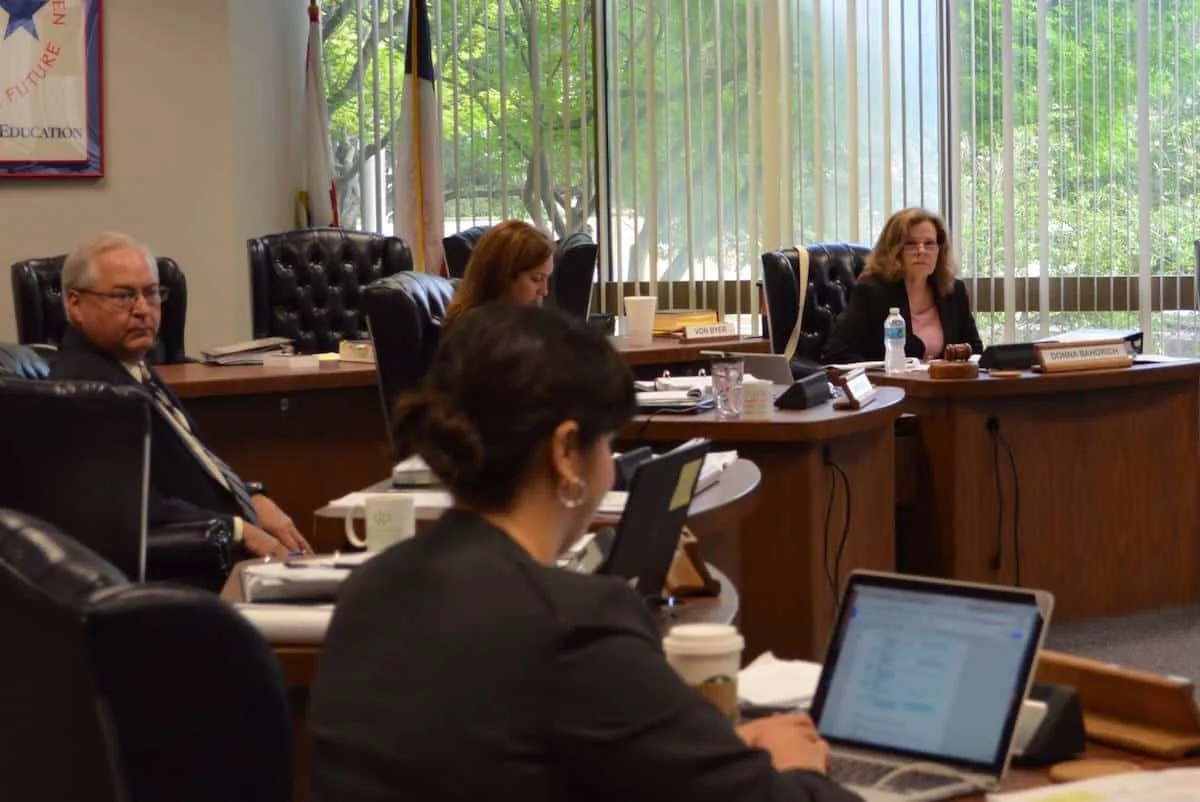The Texas State Board of Education (SBOE) is an elected body responsible for setting policies and curriculum standards for Texas public schools. Created by constitutional amendment in 1949, the board plays a central role in shaping public education in one of the nation’s largest and most diverse states. Although it does not directly run schools, the board has broad influence over what is taught in classrooms, how students are assessed, and which instructional materials are approved for use.
In addition to establishing curriculum standards through the Texas Essential Knowledge and Skills (TEKS), the SBOE adopts textbooks, oversees management of the multibillion-dollar Permanent School Fund, and reviews charter school applications. While the Texas Education Agency handles day-to-day operations and policy implementation, the SBOE sets the long-term framework that guides public education statewide.
Over the years, the board has attracted national attention for ideological debates over curriculum and textbook content, including history and science standards. These debates have highlighted the political nature of education policy and drawn public scrutiny to the board’s decisions.
Powers and Functions
By law, the State Board of Education’s responsibilities include:
- establishes graduation requirements;1
- adopts a list of approved textbooks that school districts must use if they want to purchase materials with state funding;2
- oversees the state Permanent School Fund;3
- reviews new charter applications for charter schools, and approves or vetoes the education commissioner’s decisions to award new charters;4
- appoints board members to military reservation and special school districts;5
- provides final review of rules proposed by the State Board for Educator Certification.6
The State Board of Education works closely with the Texas Education Agency, which supports it administratively.
Board Members
The Texas State Board of Education board is composed of 15 elected members representing each of the state’s 15 education districts. Ten of the current members are Republicans, and five are Democrats.
View a list of members.
| District | Name | Party | First Elected |
|---|---|---|---|
| 1 | Gustavo Reveles | Dem | 2024 |
| 2 | L.J. Francis | Rep | 2022 |
| 3 | Marisa Perez-Diaz | Dem | 2024 |
| 4 | Staci Childs | Dem | 2024 |
| 5 | Rebecca Bell-Metereau | Dem | 2020 |
| 6 | Will Hickman | Rep | 2020 |
| 7 | Julie Pickren | Rep | 2022 |
| 8 | Audrey Young | Rep | 2020 |
| 9 | Keven Ellis | Rep | 2016 |
| 10 | Tom Maynard | Rep | 2012 |
| 11 | Brandon Hall | Rep | 2024 |
| 12 | Pam Little | Rep | 2018 |
| 13 | Tiffany Clark | Dem | 2024 |
| 14 | Evelyn Brooks | Rep | 2022 |
| 15 | Aaron Kinsey | Rep | 2022 |

Term of Office
Members serve four-year terms except after redistricting, when seven of the 15 members randomly are chosen to serve two-year terms.7 Education district borders are redrawn every 10 years. This system ensures a system of staggered terms in which about half of the board’s seats are up for election every two years, except after redistricting when all the seats are contested.
Board Chair
Every two years, the governor selects a chair from among the board’s members, with approval from the Texas Senate.8 If a board member serves two consecutive two-year terms as chair, he or she is not eligible to be named to the position again until four years have passed.
The board also elects a vice chair and secretary from among its members.
Qualifications
Candidates for State Board of Education must meet the following qualifications:9
- may not hold other public office;
- registered to vote in the district where they are seeking office;
- resident in the district for at least one year as of Election Day;
- at least 26 years of age;
- not be a registered lobbyists representing interests relevant to the board.
Meetings Schedule

The Texas State Board of Education is required by law to meet at least quarterly.
It holds its meetings at the William B. Travis State Office Building, which houses the Texas Education Agency, at 1701 N. Congress Avenue in Austin.
The meetings are open to the public and webcasts are available online.
FAQ
SBOE members are elected by Texas voters in 15 districts across the state. Each member serves a 4-year term.
The SBOE typically meets four times a year. Special meetings may be called as needed.
Meetings are open to the public. You can attend in person, watch live streams online, or submit written comments before the meeting.
Yes, the SBOE has the authority to approve or reject textbooks and make decisions about the state’s curriculum standards. They review textbooks and instructional materials to ensure they align with TEKS.
While the Texas Legislature controls the overall education budget, the SBOE helps allocate funds from the Permanent School Fund, and oversees its investments managers.
Yes, the SBOE can modify graduation requirements, such as the number of credits needed or the types of courses students must complete. These changes are usually based on educational trends and legislative guidance.
Textbooks must go through a review process before being adopted by the SBOE. Publishers submit their materials, which are reviewed for alignment with TEKS, and the public can provide feedback before the board makes a decision.
Sources
- Texas Education Code § 28.025 ↩︎
- Texas Education Code § 31.023 ↩︎
- Texas Constitution Article VII, § 5; Texas Education Code Chapter 43 ↩︎
- Texas Education Code § 12.101 ↩︎
- Texas Education Code § 11.352 ↩︎
- Texas Education Code § 21.031 ↩︎
- Texas Education Code § 7.104 ↩︎
- Texas Education Code § 7.107 ↩︎
- Texas Education Code § 7.103 ↩︎



